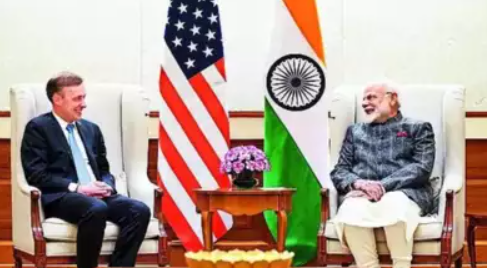USA to Lift Nuclear Sanctions on India: A New Era of Strategic Partnership
he U.S. announces plans to lift nuclear sanctions on India, enhancing bilateral ties and promoting civil nuclear cooperation to address energy needs and strengthen global clean energy initiatives.
1/9/20252 min read


USA to Remove Nuclear Sanctions on India: An In-Depth Analysis
Introduction
In a significant diplomatic development, the United States has announced its intention to lift longstanding barriers to civil nuclear cooperation with India. This move is poised to enhance bilateral relations and open new avenues for collaboration in nuclear energy between the two nations.
Historical Context of U.S.-India Nuclear Relations
Early Collaborations and Subsequent Sanctions
The U.S. and India have shared a complex nuclear history. In the 1960s, the United States assisted India in developing its nuclear energy capabilities. However, India's nuclear tests in 1974 and 1998 led to international condemnation and the imposition of sanctions by the U.S. and other nations. These sanctions aimed to curb nuclear proliferation and signaled a period of strained relations between the two democracies.
The 2008 Civil Nuclear Agreement
A turning point came with the signing of the U.S.-India Civil Nuclear Agreement in 2008, which ended a three-decade hiatus in nuclear trade between the two countries. This agreement allowed India access to nuclear technology and fuel for civilian purposes, despite not being a signatory to the Nuclear Non-Proliferation Treaty (NPT). It underscored a mutual recognition of India's growing energy needs and its status as a responsible nuclear state.
Recent Developments Leading to the Lifting of Sanctions
U.S. National Security Advisor's Announcement
On January 6, 2025, U.S. National Security Advisor Jake Sullivan, during his visit to New Delhi, announced that the United States is finalizing steps to remove barriers on civil nuclear cooperation with Indian firms. He described this initiative as a significant advancement in cementing the bilateral partnership between the two countries.
India's Nuclear Liability Law and Its Implications
One of the primary obstacles to U.S.-India nuclear cooperation has been India's nuclear liability law, which holds suppliers liable in the event of an accident. This provision deviates from international norms, where operators are typically held accountable, and has deterred U.S. companies from participating in India's nuclear energy sector. The recent U.S. decision to lift restrictions indicates progress in addressing these challenges, potentially paving the way for greater collaboration.
Strategic and Economic Implications
Strengthening Bilateral Relations
The removal of nuclear sanctions is expected to strengthen U.S.-India relations further, fostering collaboration in energy, technology, and defense sectors. It reflects a shared commitment to addressing global challenges, including climate change, by promoting clean energy solutions.
Enhancing Energy Security
For India, access to advanced nuclear technology and fuel is crucial for meeting its growing energy demands and reducing carbon emissions. The lifting of sanctions could facilitate the development of nuclear power projects, contributing to the country's energy security and sustainability goals.
Conclusion
The U.S. decision to remove nuclear-related restrictions on India signifies a new chapter in bilateral relations, characterized by mutual trust and strategic cooperation. This development holds promise for enhanced collaboration in civil nuclear energy, aligning with both nations' economic and environmental objectives.